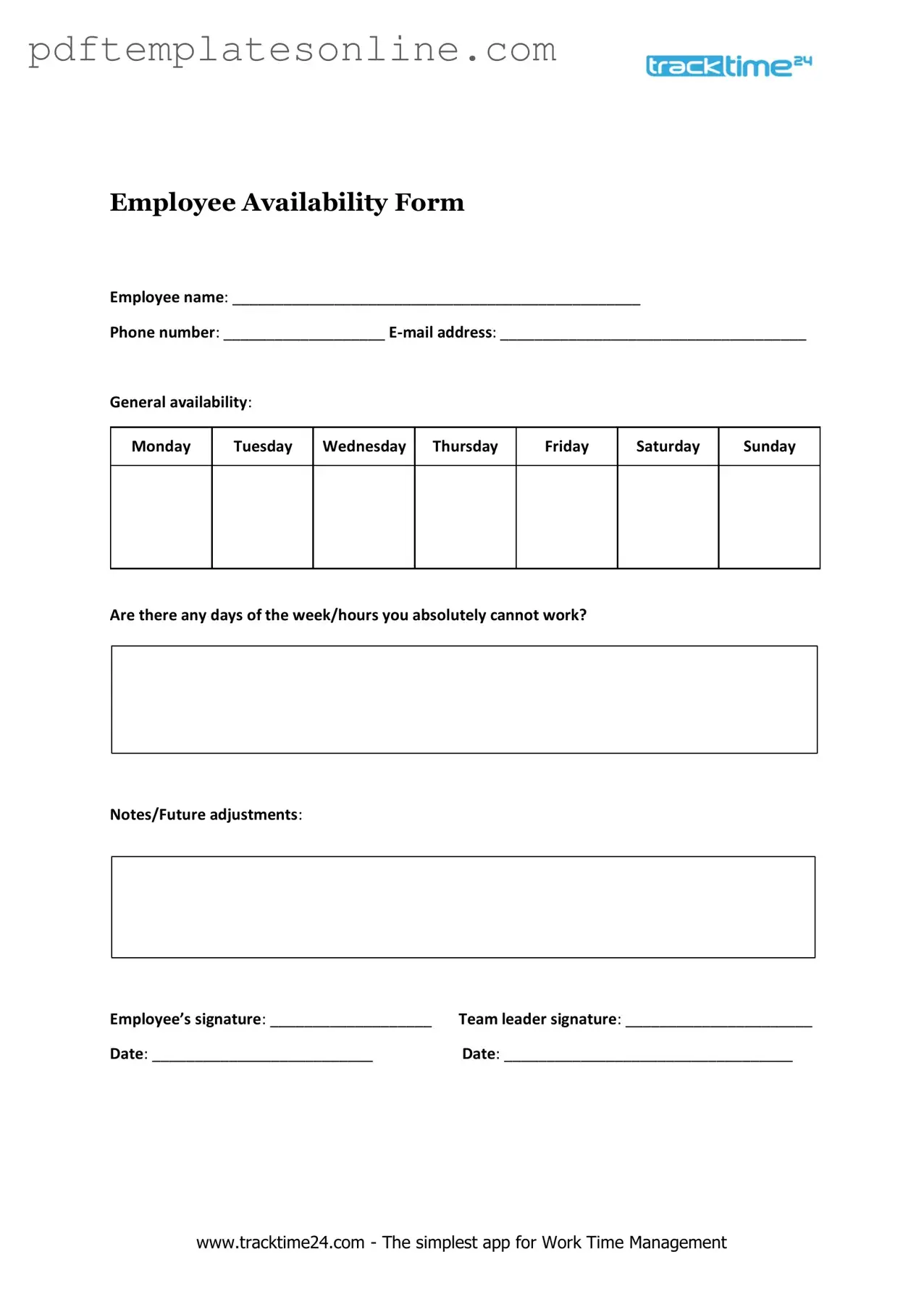Completing the Employee Availability form can seem straightforward, but many people make common mistakes that can lead to misunderstandings or scheduling conflicts. One frequent error is not providing complete information. When individuals leave sections blank or fail to specify their preferred hours, it complicates the scheduling process for managers. Clarity is essential, and filling out every relevant section helps ensure everyone is on the same page.
Another mistake is failing to update the form when personal circumstances change. Life events such as new commitments, changes in school schedules, or shifts in family responsibilities can affect availability. If employees do not communicate these changes promptly, it may result in missed shifts or unfulfilled expectations.
Some individuals also underestimate the importance of being realistic about their availability. Overcommitting by indicating they are free at all times can lead to burnout and dissatisfaction. It's crucial to be honest about what hours can genuinely be worked, as this fosters a healthier work-life balance.
In addition, not considering peak hours for the business can be a significant oversight. Employees should think about when the business needs them most. Indicating availability during off-peak hours may not align with the company’s needs, making it difficult for managers to create effective schedules.
Another common issue arises from misunderstanding the form's instructions. Some employees may misinterpret what is being asked, leading to incorrect entries. Taking a moment to carefully read the instructions can save time and prevent confusion later on.
Additionally, a lack of communication with supervisors can lead to mistakes. Employees should feel empowered to ask questions if they are unsure about how to fill out the form. Engaging in dialogue can clarify expectations and lead to a more accurate representation of availability.
Moreover, failing to consider travel time can be detrimental. Employees often forget to account for the time it takes to commute to work. By not factoring in travel, they risk being late or unable to make it to their shifts on time.
Lastly, neglecting to review the completed form before submission can result in errors going unnoticed. A quick review can catch mistakes that may have been overlooked during the initial filling out of the form. Taking this final step can enhance accuracy and prevent potential scheduling issues.
